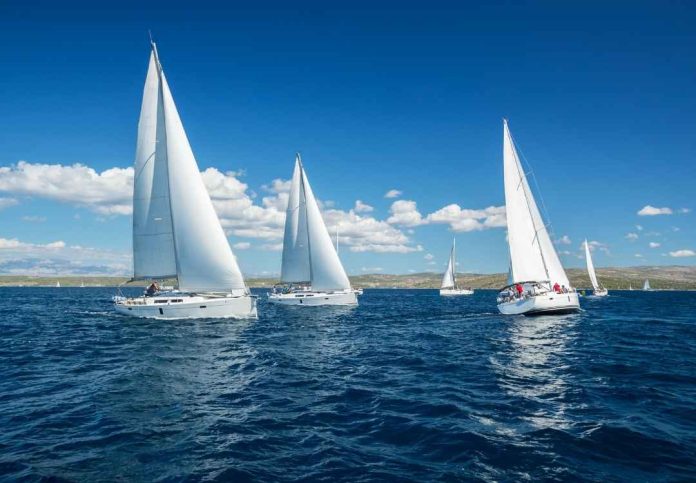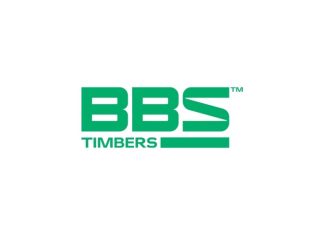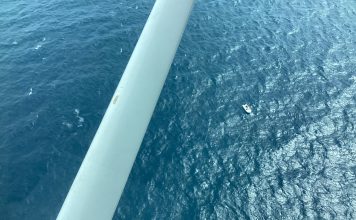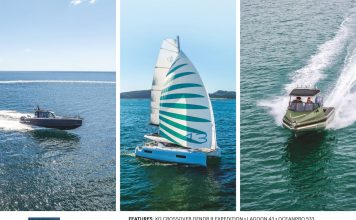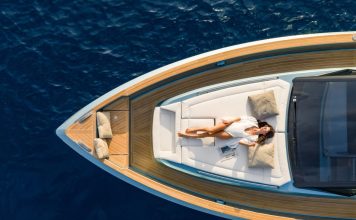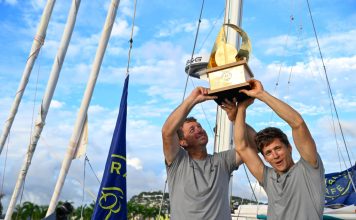Multihulls: The Speed Machines
In the PIC Coastal Classic, multihulls are often the ones to beat, thanks to their impressive speed. Multihulls, such as trimarans and catamarans, are designed with two or more hulls, which significantly reduces water resistance, allowing these vessels to glide swiftly over the surface of the water. Their design gives them a considerable advantage in terms of speed, making them the favourites for line honours—the title awarded to the first boat to finish the race.
One of the most famous multihulls to compete in the Coastal Classic is Team Vodafone Sailing (later known as Frank Racing), a trimaran that has repeatedly set speed records over the years. Trimaran designs like this not only offer speed but also stability, even in challenging conditions. While they tend to dominate the headlines for their rapid finishes, racing in a multihull is not without its challenges—handling such powerful vessels in varying wind conditions requires precision and skill.

Monohulls: The Traditional Contenders
While multihulls may steal the spotlight for their speed, monohulls bring a sense of tradition and endurance to the race. Monohulls have just one hull, which provides a different sailing experience compared to multihulls. They may not be as fast, but monohulls have their own advantages, particularly when it comes to handling rougher seas or navigating the changing wind conditions along the race route.
Boats like Lion New Zealand, a famous monohull designed by Sir Peter Blake, have historically played a significant role in the race. While they may not cross the finish line as quickly as their multihull competitors, monohulls often have closer, more tactical races, where careful manoeuvring and strategy are key to success. Their competitive edge lies in their versatility and the skill required to keep them running at peak performance over the 119 nautical miles of the Coastal Classic.

Cruiser-Racers: Balancing Speed and Comfort
Another category that adds diversity to the Coastal Classic is the cruiser-racers—boats designed for both racing and leisure cruising. These boats may not match the speed of a purpose-built racing yacht, but they can hold their own in a competitive environment while offering a more comfortable sailing experience for their crew. Cruiser-racers often feature more amenities onboard, which means they’re not just racing yachts but also capable of longer voyages.
The Coastal Classic is an inclusive race, meaning there are plenty of participants who enter just for the experience, and the cruiser-racers play a big part in that. They bring a sense of community and camaraderie to the race, with many crews enjoying the social aspect as much as the competition. In these boats, it’s not just about line honours—it’s about the adventure and the shared experience of sailing along New Zealand’s stunning coastline.
Technological Innovations: High-Tech Racers
In recent years, the PIC Coastal Classic has seen the rise of high-tech racing yachts, which push the boundaries of what’s possible in terms of design and performance. These boats are built with advanced materials, such as carbon fibre, which makes them incredibly light yet strong. Combined with cutting-edge sail designs and rigging systems, these high-tech racers can achieve remarkable speeds, particularly in the right wind conditions.
Boats like Beau Geste, a high-performance grand-prix monohull, exemplify this technological shift. Equipped with the latest in yacht racing technology, these boats are designed to sail faster and more efficiently than ever before. The PIC Coastal Classic offers a chance for these boats to show off their speed and technical prowess, often delivering some of the most exhilarating moments of the race.

Smaller Boats: The Underdogs
Finally, it’s worth mentioning the smaller boats that compete in the Coastal Classic. While they may not have the speed or technology of the larger vessels, these boats bring their own unique charm to the race. Many of these smaller yachts are helmed by amateur sailors or families who are there to enjoy the experience and take on the challenge of completing the race.
For these sailors, the race is more about endurance and determination. They may not finish first, but the sense of achievement they gain from crossing the finish line in Russell, often after battling through tougher conditions for longer, is immense. These boats add to the diversity and inclusiveness of the event, reminding everyone that the Coastal Classic is a race for all sailors, no matter the size of their boat.
Conclusion
The PIC Coastal Classic is a celebration of New Zealand’s sailing culture, and the diverse range of boats that take part each year reflects that. From the high-speed multihulls that dominate the race to the sturdy monohulls, cruiser-racers, and even the smaller underdogs, every boat brings its own unique strengths and challenges to the event. This variety is what makes the race so captivating, year after year. Whether you’re a seasoned sailor or just an enthusiastic spectator, the range of boats in the Coastal Classic ensures that there’s always something exciting happening on the water.












